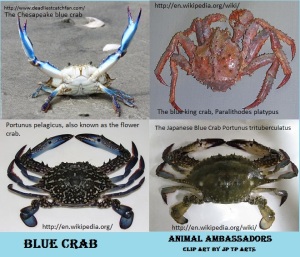Highly unusual and less known life forms but not less important.
Frilled Shark (Chlamydoselachus anguineus)
Conservation status: Near Threatened by the IUCN Red List. Although little is known of its life history, this deep water species is likely to have very little resilience to depletion as a result of even non-targeted exploitation.
Scientific classification
Kingdom: Animalia
Phylum: Chordata
Class: Chondrichthyes
Subclass: Elasmobranchii
Order: Hexanchiformes
Family: Chlamydoselachidae
Genus: Chlamydoselachus
Species: C. anguineus
Introduction:
The frilled shark was first scientifically recognized by German ichthyologist Ludwig Döderlein, who visited Japan between 1879 and 1881 and brought two specimens to Vienna. However, his manuscript describing the species was lost, and so the first description of the frill shark became authored by American zoologist Samuel Garman, working from a 1.5 m (4.9 ft) long female caught from Sagami Bay in Japan. His account, entitled “An Extraordinary Shark”, was published in an 1884 volume of Proceedings of the Essex Institute. Garman placed the new species in its own genus and family, and gave it the name Chlamydoselachus anguineus from the Greek chlamy (“frill”) and selachus (“shark”), and the Latin anguineus for “snake-like”. Other common names for this species include frill shark, lizard shark, scaffold shark, and silk shark.
More recent investigations have found that the similarities between the frilled shark and extinct groups may have been overstated or misinterpreted, and that this shark exhibits a number of skeletal and muscular traits that firmly place it with the neoselachians (modern sharks and rays), and more specifically with the cow sharks in the order Hexanchiformes (though systematist Shigeru Shirai has proposed that it be placed in its own order, Chlamydoselachiformes). Nevertheless, the frilled shark belongs to one of the oldest still-extant shark lineages, dating back to at least the Late Cretaceous (c. 95 Ma) and possibly to the Late Jurassic (c. 150 Ma). Because of its ancient ancestry and “primitive” characteristics, it has been described as a “living fossil”.
Distribution and habitat:
The frilled shark inhabits the outer continental shelf and upper to middle continental slope, seeming to favor upwellings and other biologically productive areas. Though it has been caught from a depth of 1,570 m (5,150 ft), it usually does not occur deeper than 1,000 m (3,300 ft). In Suruga Bay, it is most common at a depth of 50–200 m (160–660 ft), except from August to November when the temperature at the 100 m (330 ft) water layer exceeds 15 °C (59 °F) and the sharks shift into deeper water. On rare occasions, this species has been seen at the surface. The frilled shark is usually found close to the bottom, with one individual observed swimming over an area of small sand dunes. However, its diet suggests that it does make substantial forays upward into open water. This species may make vertical migrations, approaching the surface at night to feed. There is spatial segregation by size and reproductive condition. Rather uncommon, the frilled shark has been recorded from a number of widely scattered locations in the Atlantic and Pacific Oceans. In the eastern Atlantic, it occurs off northern Norway, northern Scotland and western Ireland, from France to Morocco including Madeira, and off Mauritania. In the central Atlantic, it has been caught at several locations along the Mid-Atlantic Ridge, from north of the Azores to the Rio Grande Rise off southern Brazil, as well as over the Vavilov Ridge off West Africa. In the western Atlantic, it has been reported from off New England, Georgia, and Suriname. In the western Pacific, it is known from southeastern Honshu, Japan, to Taiwan, off New South Wales and Tasmania in Australia, and around New Zealand. In the central and eastern Pacific, it has been found off Hawaii, California, and northern Chile. The frilled sharks off southern Africa were described as a different species, C. africana, in 2009.
Description:
Their mouth is located at the leading edge of their snout (terminal) rather than underneath like most sharks and they have small tricuspid teeth in both jaws. Their rows of teeth are rather widely spaced, numbering 19–28 teeth in their upper jaws and 21–29 teeth in their lower jaws. Each tooth is small, with three slender, needle-like cusps alternating with two cusplets. Their very long jaws are positioned terminally (at the end of the snout), as opposed to the underslung jaws of most sharks. They have a small lobe-like dorsal finexternal link set far back over their pelvic fins with an anal fin that is larger than their dorsal fin. Their pectoral fins are small and paddle-shaped and their very long caudal fin (tail fin) has a small ventral lobe and without a subterminal notch. Many frilled sharks are found with the tips of their tails missing, probably from predatory attacks by other shark species.
Highly specialized for life in the deep sea, the frilled shark has a reduced, poorly calcified skeleton and an enormous liver filled with low-density lipids, allowing it to maintain its position in the water column with little effort. Owing to its deep water habitat, very few observations of the frilled shark have been made in its natural environment . Analysis of stomach contents of frilled sharks brought to the surface indicate that this species mostly preys on deep water squid and a variety of fish, including other sharks
Sources:
http://en.wikipedia.org/wiki/File:Chlamydoselachus_anguineus_head.jpg
Photo credit:
Photo1 The mouth of a frilled shark (Chlamydoselachus anguineus) at Shin-Enoshima Aquarium. This image was originally posted to Flickr by saname777 at http://flickr.com/photos/27730398@N08/3429890893. It was reviewed on 14 April 2009 by the FlickreviewR robot and was confirmed to be licensed under the terms of the cc-by-2.0.


